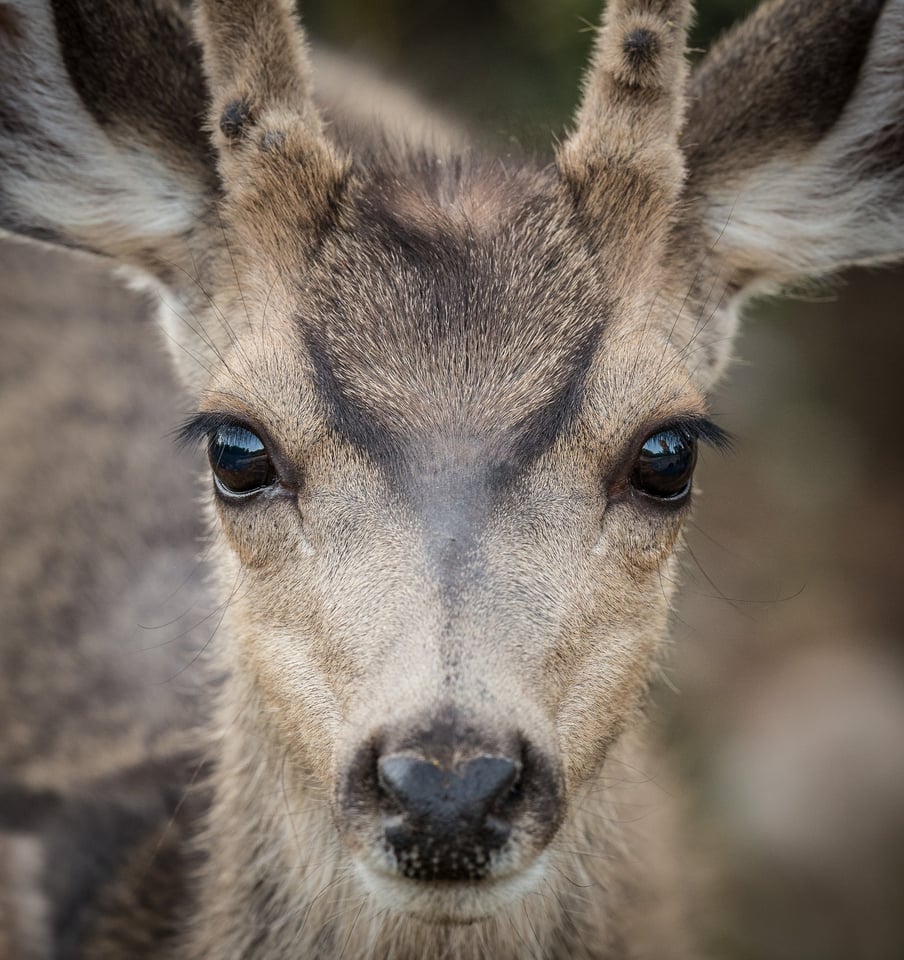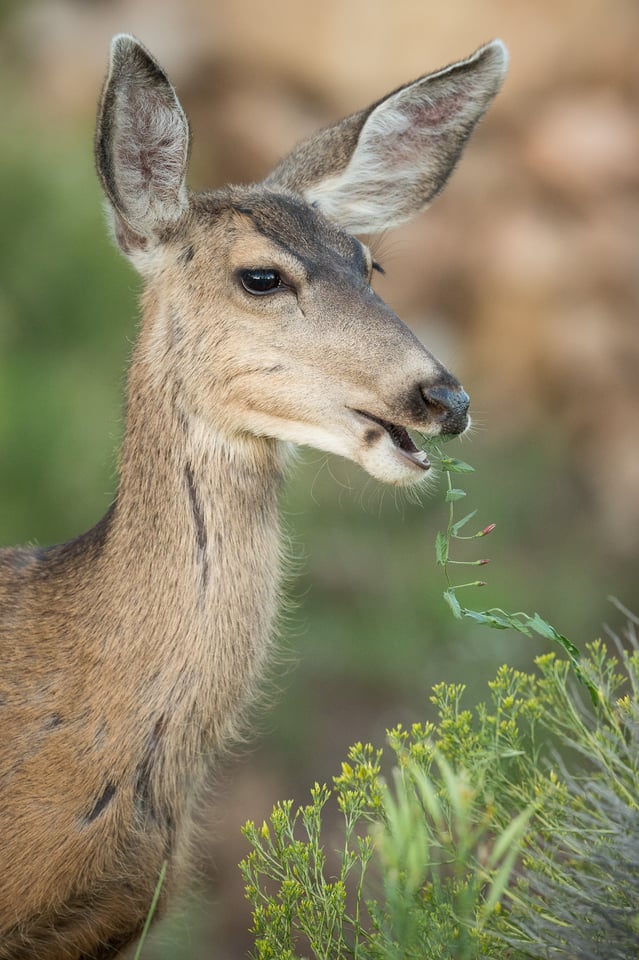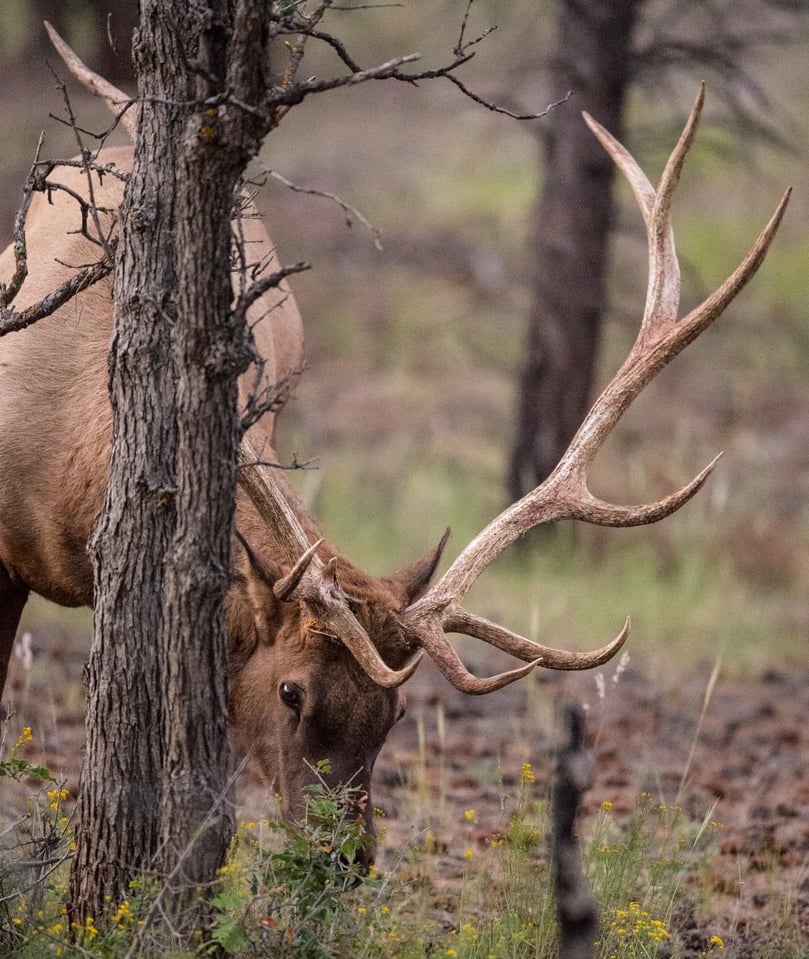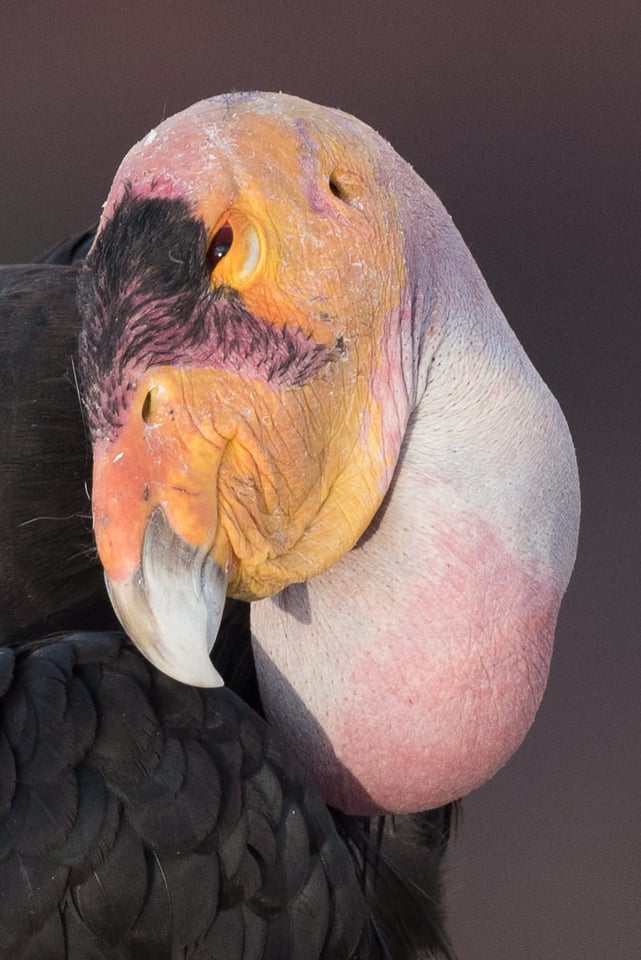And I guess the follow-up question would be “Could Verm come up with a more provocative title?” To put you at ease, these sample pics are all saved at web resolution so you needn’t don eye protection. This last weekend I had the pleasure of shooting with the new AF-S Nikkor 500mm f/4E FL ED VR. Here are some quickie sample pics and comments from the first few days of shooting. There’s more to come as I’ll be doing in-depth field tests and comparing results with the “old” Nikkor 500mm.
Is it sharp? I’ll let this spike answer.

This was handheld at 1/125 sec in the new “sport VR” mode. Sport VR is designed for objects that move in multiple directions, say a football player dodging a tackle or a cheetah chasing dinner or a football player dodging a cheetah chasing dinner. Speaking of eating…


No complaints with these pre-dawn breakfast shots. And finally the sun crests the horizon.

Looks like the deer on the right is fawning over the other one. Yes the 500 FL is a sharp as my wit is dull.

This bull elk was polishing his antlers and taking off some oak leaves in the process. It was pre-pre-dawn, and I was shooting wide open at 25600 ISO and 1/60th of a second. Pretty soft. Alas the VR didn’t provide a miracle here. Here’s a better result (sharpnesswise) at 1/80 sec.

Let’s stop ruminating over the ruminants and get onto some bird-in-flight action. The nearly two-pound weight reduction compared to the old 500, makes the 500 FL eminently handholdable.

This Turkey Vulture is making the rounds wondering when the next tourist will slip off the rim of the Grand Canyon.

I’ve been standing in the sun for quite some time now and smelling a bit ripe. The vulture comes in for a closer inspection. AF-tracking with the D4s is giving a very high hit rate so far.

And a young one comes by for a portrait shoot with the 500 FL attached to a D810. Let’s zoom in.

Focus looks spot on the head in this one, not the easiest task with the bird coming nearly head on. Nevertheless, my initial impression is that my keeper rate was lower with the D810 than the D4s, which is strange given the have the same AF-module. I’ll be doing more testing on this.

What have we here? A vulture imposter. This is a Zone-tailed Hawk (juvenile). The Zone-tail has a clever hunting strategy. It looks nearly identical to a turkey vulture – similar size and markings and flying style. Chipmunks, mice and the like know Turkey Vultures only eat carrion and are no threats to a live critter. The Zone-tail takes advantage of this, mixing in with a flock of vultures all the while keeping a sharp eye out for tasty meals that have let their guard down. The 500 FL is tracking well as the hawk flies perpendicular to the lens axis. This despite a complex background that could easily throw the AF off.

And here it is coming straight on to the camera, giving a very narrow target to focus on, but again the 500 FL nails the shot.

And once more coming straight on, but this time the 500 FL is paired with a TC 14E II, which is not the latest version of 1.4x teleconverter (TC 14E III). Focus is looking good, though so far my keeper rate for BIF shots with the 1.4x was lower than without. I hope to try out the newer 1.4x with the 500 FL for the in-depth review.

Looks like something died. The full crop (pink chest bulge) on the perched vulture indicates it recently ate.
From one scavenger to the uber-scavenger – the California Condor – largest flying land bird in North America and one of the rarest (only about 200 in the wild).

Here’s the handsome #87 giving the camera sexy. And this is where my too sharp question raises its ugly head. This is cropped way in to 100% and otherwise the untouched RAW file.

And here it is tweaked to get rid of the RAW blah. Eek, I can see every pore in it’s neck. Moreover, this was shot with the old 1.4x TC attached. I used a tripod on this – all the other prior shots in this post are handheld.
I’m okay with shots this sharp, especially pushing out to 500mm with the 1.4x, but upon close inspection I noticed this.

No, not the dandruff. The 500 FL is resolving the individual parallel barbs on the feathers so well they are creating interference with the pixel grid of the D810 sensor – in a word, I got moire. The luminance moire shows up as the wavy dark banding on the feathers and I’ve got color moire (hard to see in this output, but evident on my monitor) with repeated prismatic color splotches also evident. This is the risk you take shooting a camera without an OPLF (optical low pass filter, AKA anti-aliasing filter). The OPLF intentionally blurs the image before it reaches the sensor to reduce the possibility of moire. Of course, shooting a softer lens would probably do the trick too and the contrast between feather barbs wouldn’t show up. The cure? Shoot a body with an OPLF, such as the D4s. Better yet, don’t view your files at 400%.

So is the 500 FL too sharp? Hey, this is Photography Life and in This Life, no lens is too sharp. Sorry to worry you and I’ll get back to researching the full review.
Text and all photos ©John Sherman. Please no reproduction without written permission.
The Pentax DA560 is real too sharp ( six lenses ). Any other optical with 15 or 16 lenses can not be too sharp!
Seriously? We have to see if a 10.000$ lens sharp or not by looking at 0.81 MP pictures? With resizing like this, my Samsung Galaxy Note 4 can produce the same sharpness.
I understand that this is about the copyright and everything but can’t you just shoot some tree or your neighbors’ cat instead?
The image under the text “And a young one comes by for a portrait shoot with the 500 FL attached to a D810. Let’s zoom in.” [Verm-young-condor-BIF-South-Rim-8245-2-2.jpg] is available at 2048 × 1355 pixels: 2.78 megapixels; not the 0.81 megapixels that you claimed.
I’m glad that you believe your “Samsung Galaxy Note 4 can produce the same sharpness.”
Thank you for the preliminary review.
The new super tele lenses from Nikon are getting so sharp that we now have to deal with moire more often, I get moire regularly with my 400 f2.8E FL VR on my D810. However, no lens can be too sharp, as we will garner the benefits of this extra resolution with the new higher Mp bodies of the future and moire will then become less of an issue.
Os there any chance that in full review will see pictures / crops when lens wide open with and without tc?
This is a typical fanboy review…a lens can never be too sharp! I for one know it’s an attention grabbing headline. And you want to be in the headline news with “Look guys I have discovered a lens made by my favourite brand,Nikon,that is too sharp for any standard”. Flickr is at your fingertip, go check out Canon’s telephoto lens shots that are processed and sharpened to your taste to see if they are not “too sharp” for a Nikon. Grow up dude…
wandiba
Perhaps it’s you who needs to grow up.
Give it some thought.
Oow,
for that price its must be sharp verm, nothing special there.
Its definitely sharp! Better too sharp than soft thought right? But it doesn’t matter I can’t possibly afford it. I probably can’t even afford to rent it.
Beautiful photos.
hmm you tested sharpness on D4S ? on d4s to be sharp old old verison nikon 500 mm vr G lenst too ,,, ha very big pixels….you must testet and comapare with lod version 500 mm lens on crop body like nikon 7200,,, Until nikon d7200 to show the difference between the old and the new 500 mm lens because has very small pixels….The situation is similar when it came at Canon New Canon 600 mm F4 IS II difference between new and old is visible only when comparing the crop sensors
I would like to test it with the D7200. Please not that some of the shots in the post (including the moire example) were with the D810 and it’s tight pixel pitch, though not as tight as the D7200’s.
They are definitely not Cheap but the pictures are amazing.
I would like to see the original, full image, condor shots. The handheld shot is simply not sharp. The tripod shot is good. But it depends on how hard you cropped.
Too sharp?
Ther’s no such thing !